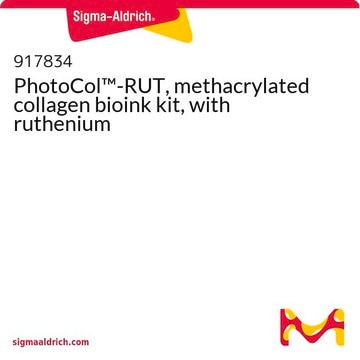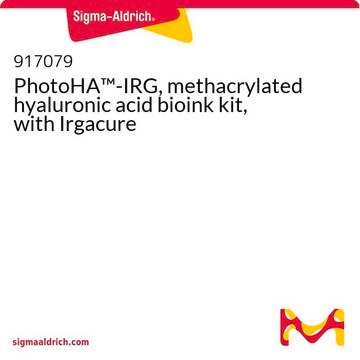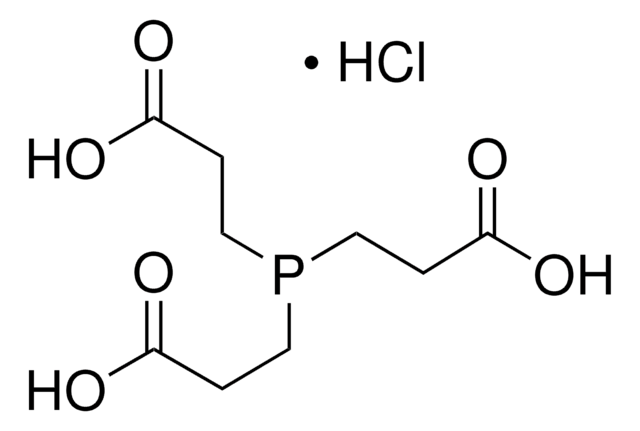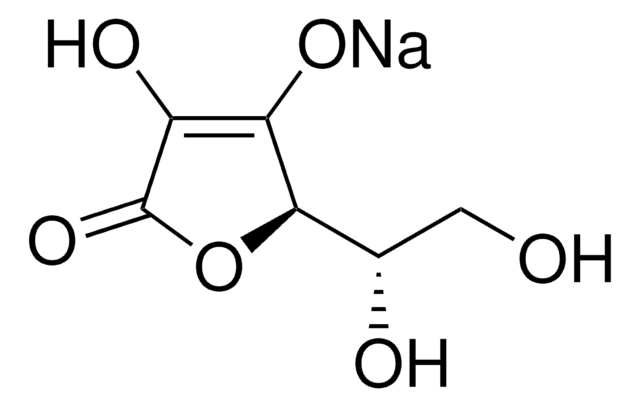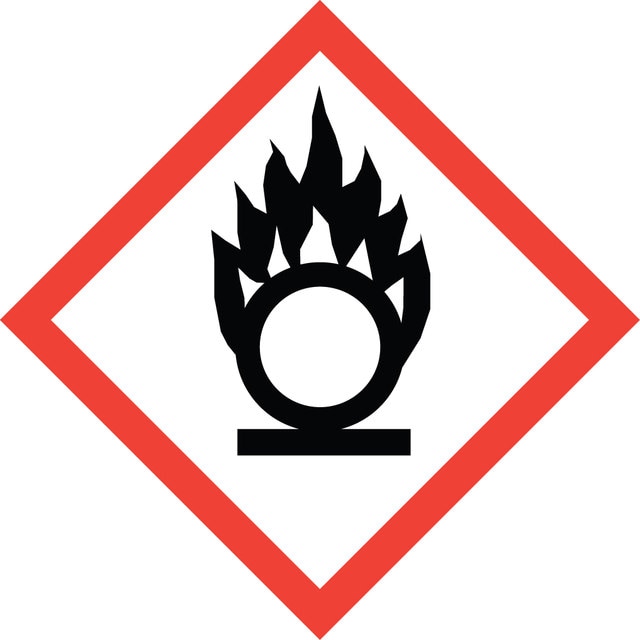917338
PhotoHA™-RUT
methacrylated hyaluronic acid bioink kit, with ruthenium
Synonym(s):
3D Bioprinting, Bioink, HAMA, Hyaluronic acid
About This Item
Recommended Products
description
Methacrylated hyaluronic acid:
Degree of methacrylation: ≥ 45-65%
Product components :
Methacrylated hyaluronic acid (100 mg)
Ruthenium (100 mg)
Sodium persulfate photoinitiator (500 mg)
Quality Level
sterility
sterile; sterile-filtered
mol wt
Mw 100-150 kDa
storage temp.
−20°C
Application
Legal Information
signalword
Danger
Hazard Classifications
Acute Tox. 4 Oral - Ox. Sol. 3 - Resp. Sens. 1 - Skin Irrit. 2 - Skin Sens. 1 - STOT SE 3
target_organs
Respiratory system
wgk_germany
WGK 3
Certificates of Analysis (COA)
Search for Certificates of Analysis (COA) by entering the products Lot/Batch Number. Lot and Batch Numbers can be found on a product’s label following the words ‘Lot’ or ‘Batch’.
Already Own This Product?
Find documentation for the products that you have recently purchased in the Document Library.
Our team of scientists has experience in all areas of research including Life Science, Material Science, Chemical Synthesis, Chromatography, Analytical and many others.
Contact Technical Service